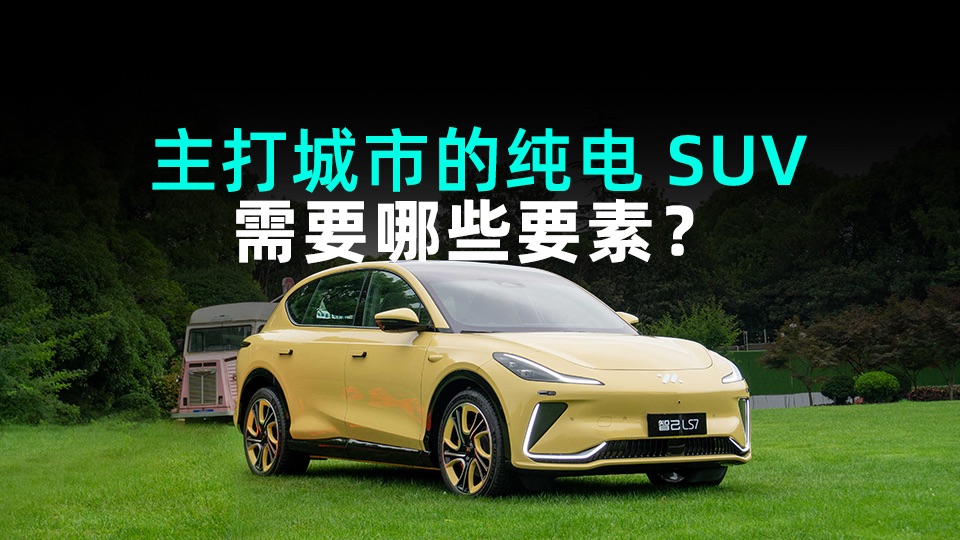When the budget for a car goes up to 300,000 RMB, which aspect do you value more – the brand, quality, configuration or cost-performance ratio?
Many people may say, having spent 300,000 RMB, it’s not too much to ask for all four. This is when domestic brands find opportunities in the smart new energy vehicle market, launching models with comprehensive product offerings. Thus, a fierce configuration battle is under way among domestic models priced at 300,000 RMB.

Looking at the new energy models of domestic brands, they have begun to focus on cabin and intelligent driving features, aiming to meet increasingly demanding requirements. This configuration battle, entwined with the price competition, has extended from newcomers to traditional brands. In response, SAIC’s IM brand launches the lower-cost Urban Fit series, based on the LS7, primarily targeting urban use scenarios.
Smaller battery and changed suspension
On June 12, the IM LS7 Urban Fit series was officially launched with a price of 289,800 RMB, 40,000 RMB less than the existing 90 kWh Elite RWD version, bringing the starting price of the LS7 down to the 300,000 RMB range.
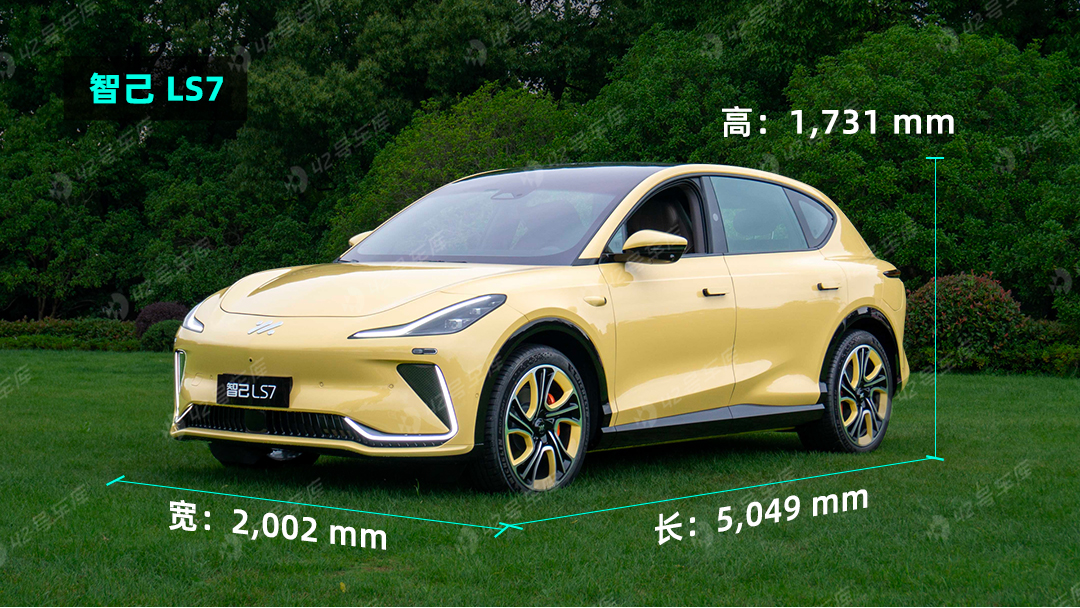
In terms of configuration, the most evident change is the reduction of the battery capacity from 90/100 kWh to 77 kWh in ternary lithium battery packs, adjusting the CLTC range to 510 km, around 80 km less than the larger battery version. Based on our test of the 90 kWh version with the same motor, the actual driving distance was reduced by 45 km after 35 km of aggressive driving on urban roads, with an air conditioner set at 24°C on auto, and an apparent energy consumption of 18.9 kWh/100 km. Therefore, the actual driving range of the 77 kWh version is estimated to be around 400 km, sufficient for daily urban commuting.

The powertrain still features a 250 kW high-power motor, which delivers a very direct and rapid acceleration sensation, as experienced in the current LS7. Notably, when the IM LS7’s acceleration pedal is abruptly pressed down during mid-to-late acceleration, there’s an explosive sensation similar to that of a dual-clutch transmission downshifting. After fully pressing down the pedal, the vehicle first delays for half a second before the power suddenly surges, creating a mechanical thrill.
Regarding driving-related hardware, the LS7 Urban Fit city series has changed the standard air suspension to an optional feature, and now comes standard with a coil spring suspension. Choosing the air suspension will require an additional 20,000 RMB.


Personally, I prefer the coil spring suspension as it allows for better feel of the car’s changing attitude during spirited driving. The coil spring version will also be tuned by the WAE team, so I’m looking forward to experiencing the dynamic performance of the LS7 with coil springs in the future.
Cabin Focuses on OTA
Upon stepping into the LS7 Urban Fit city series, the most striking feature is the large forward view. This view is derived from two unique aspects: a half-frame steering wheel paired with a front-row through-screen, ensuring no obstruction while looking at the instrument cluster while driving.

Another feature is the immense windshield, providing a view so expansive that the front-row passengers can look up and see the sky.
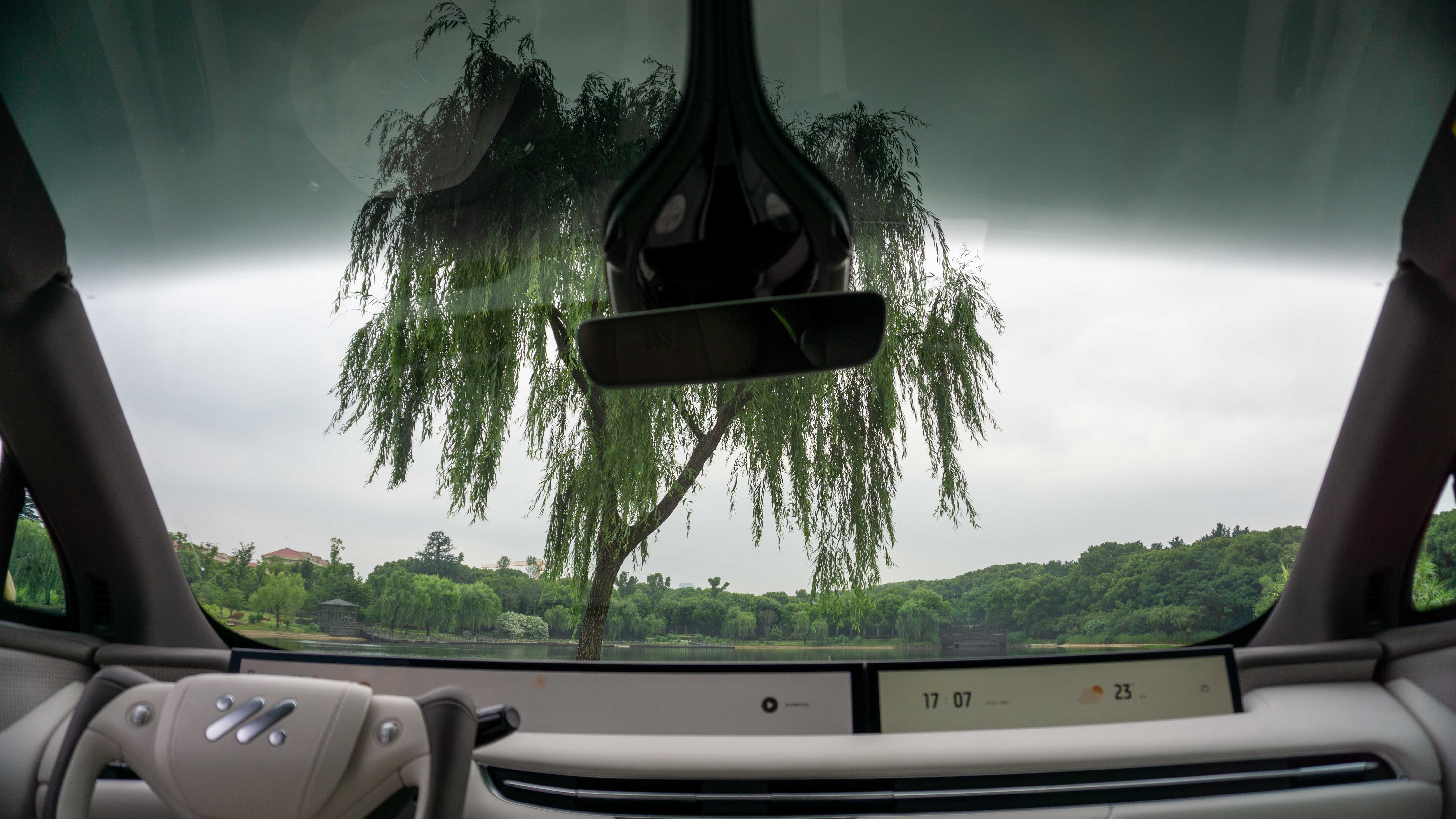
With such a combination, during regular driving, the forward view is exceptionally vast, with only the left and right A-pillars creating slight obstructions.
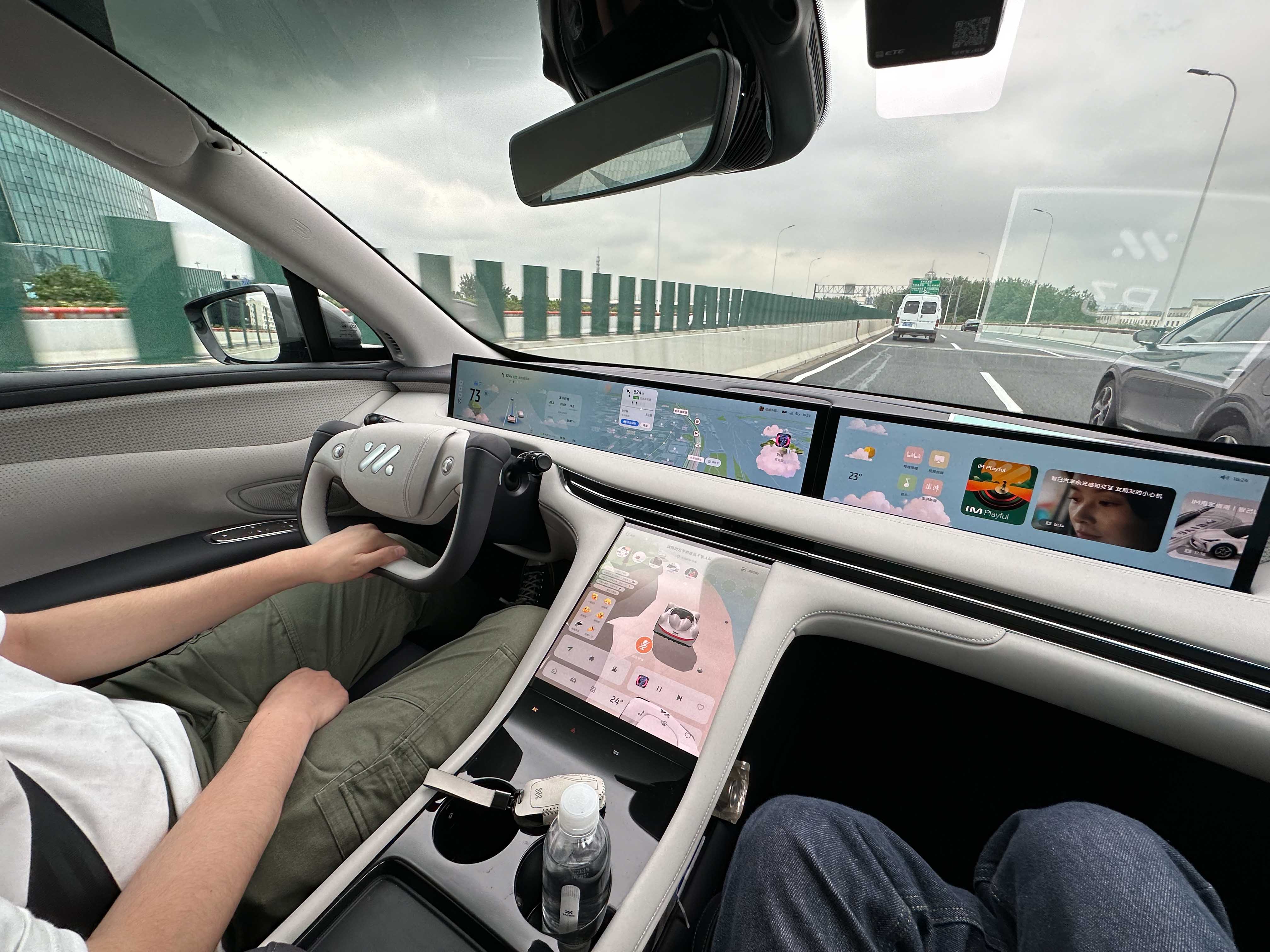
During this test drive, we also experienced the latest beta version of IM LS7’s in-car system. The most notable feature is that when the driver activates the turn signal, blind spot images appear on the left and right sides of the screen, similar to rearview mirror views.
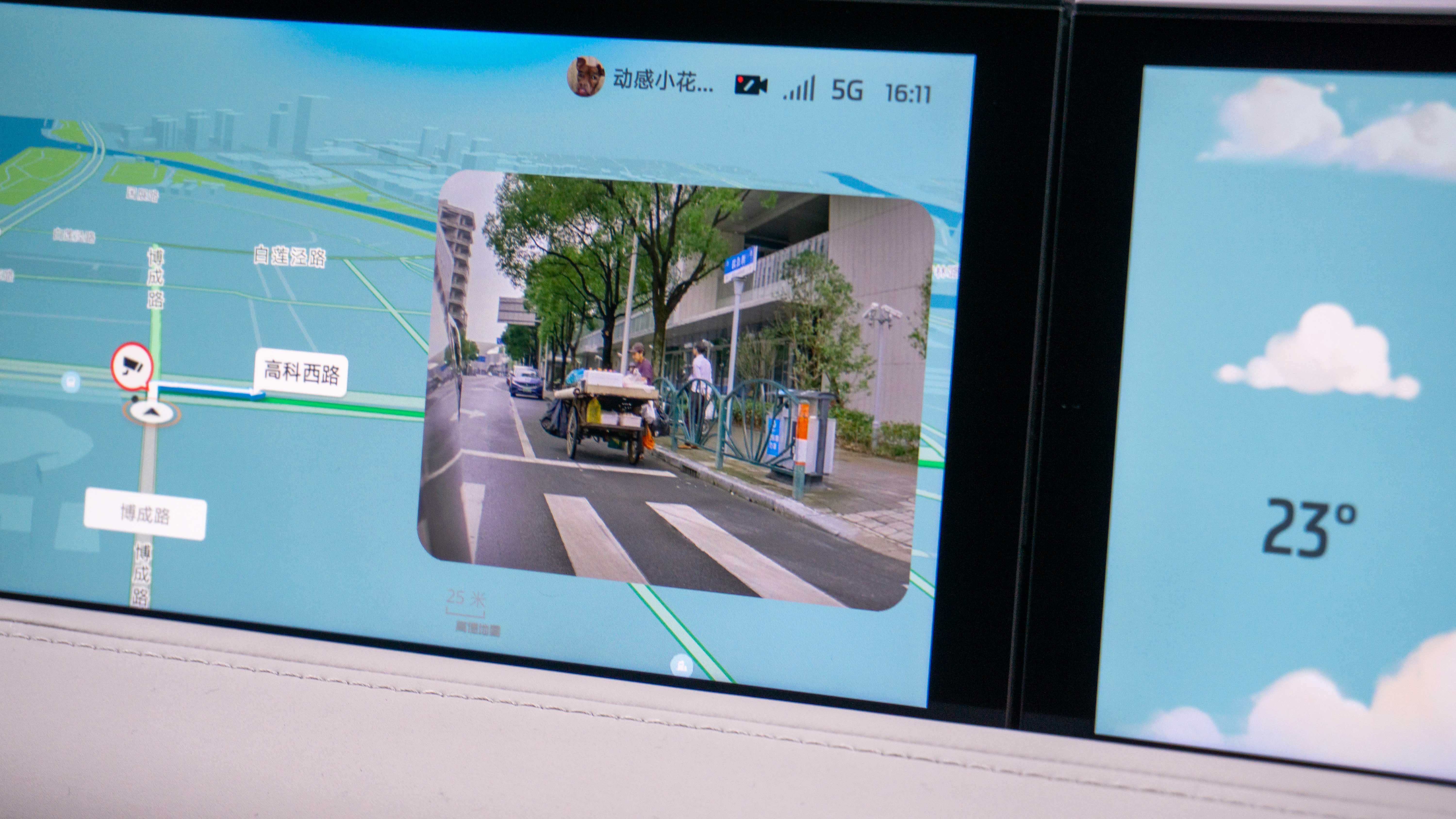
 First, when the driver uses the turn signal while the vehicle is traveling under 20 km/h, the corresponding screen will display the A-pillar blind spot image, mainly used for visual compensation within residential areas and alleys, utilizing the 5 million-pixel ADAS camera at a higher position for display.
First, when the driver uses the turn signal while the vehicle is traveling under 20 km/h, the corresponding screen will display the A-pillar blind spot image, mainly used for visual compensation within residential areas and alleys, utilizing the 5 million-pixel ADAS camera at a higher position for display.
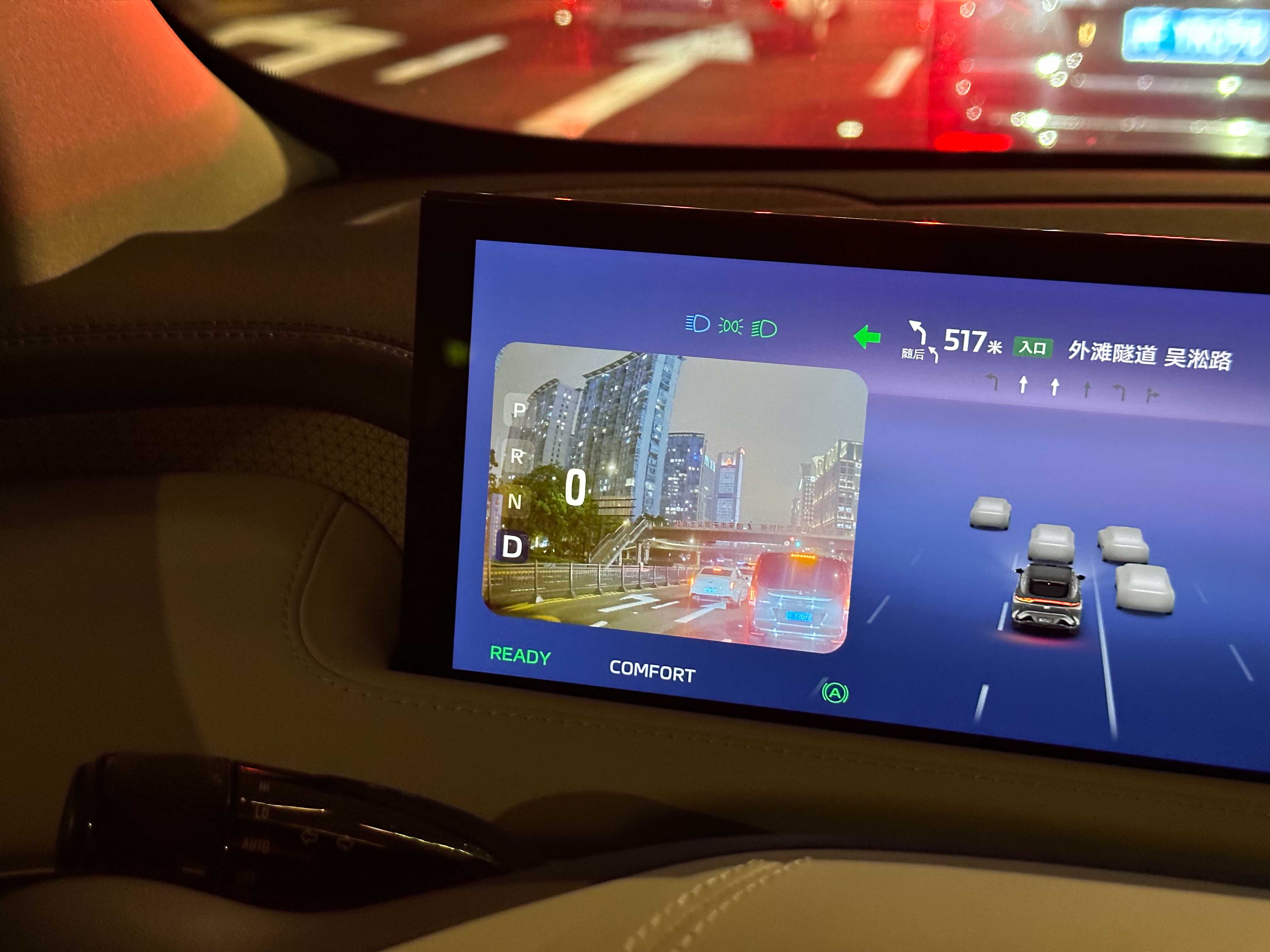
Next, when the vehicle speed exceeds 20 km/h, the turn signal will display the lateral rear image, using the lateral rear ADAS camera. This feature is similar to Tesla’s blind spot view, with exceptional image detail and color reproduction. Moreover, the camera’s positioning displays an image nearly identical to the rearview mirror’s angle, even resembling a streaming rearview mirror.
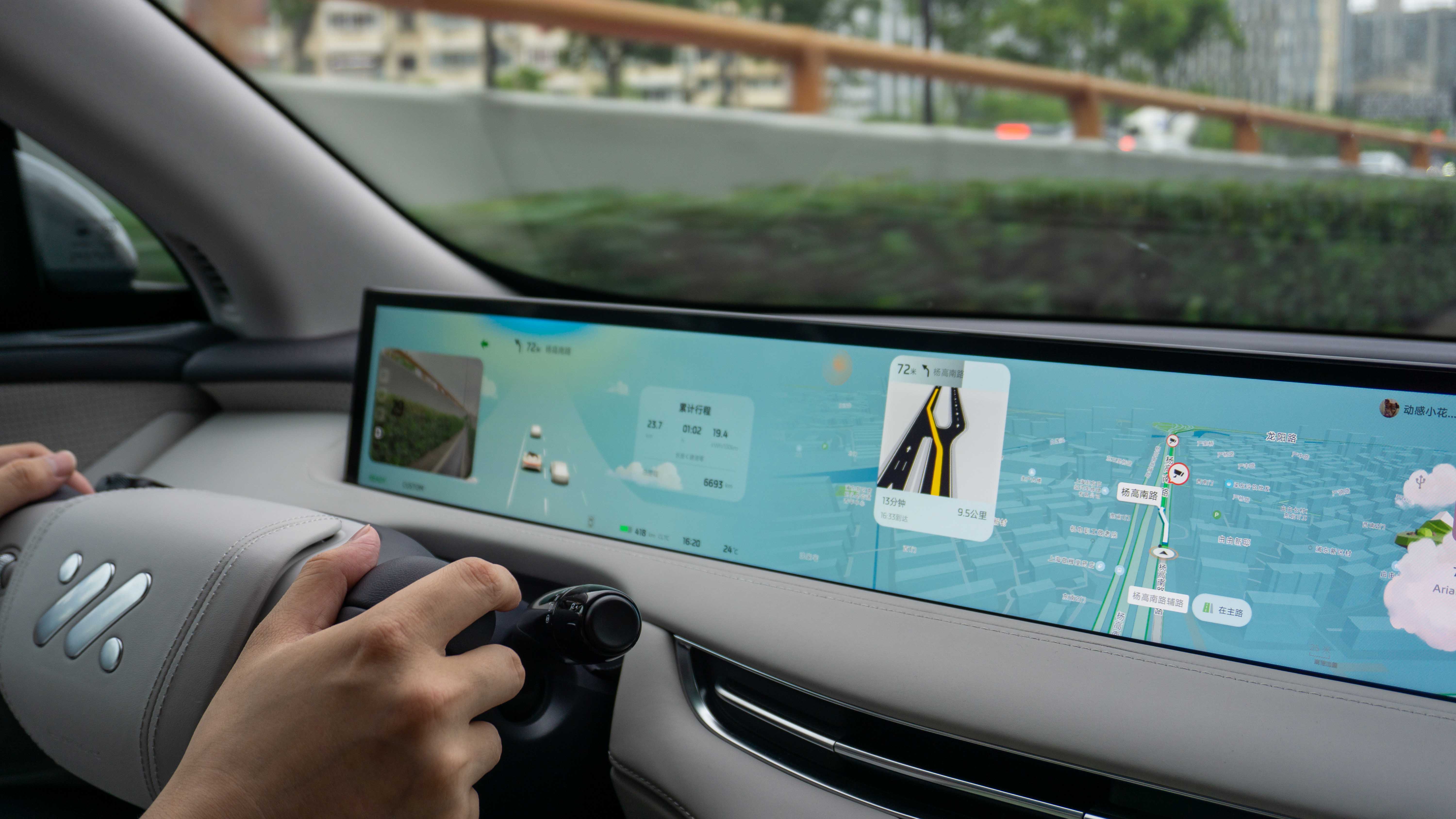
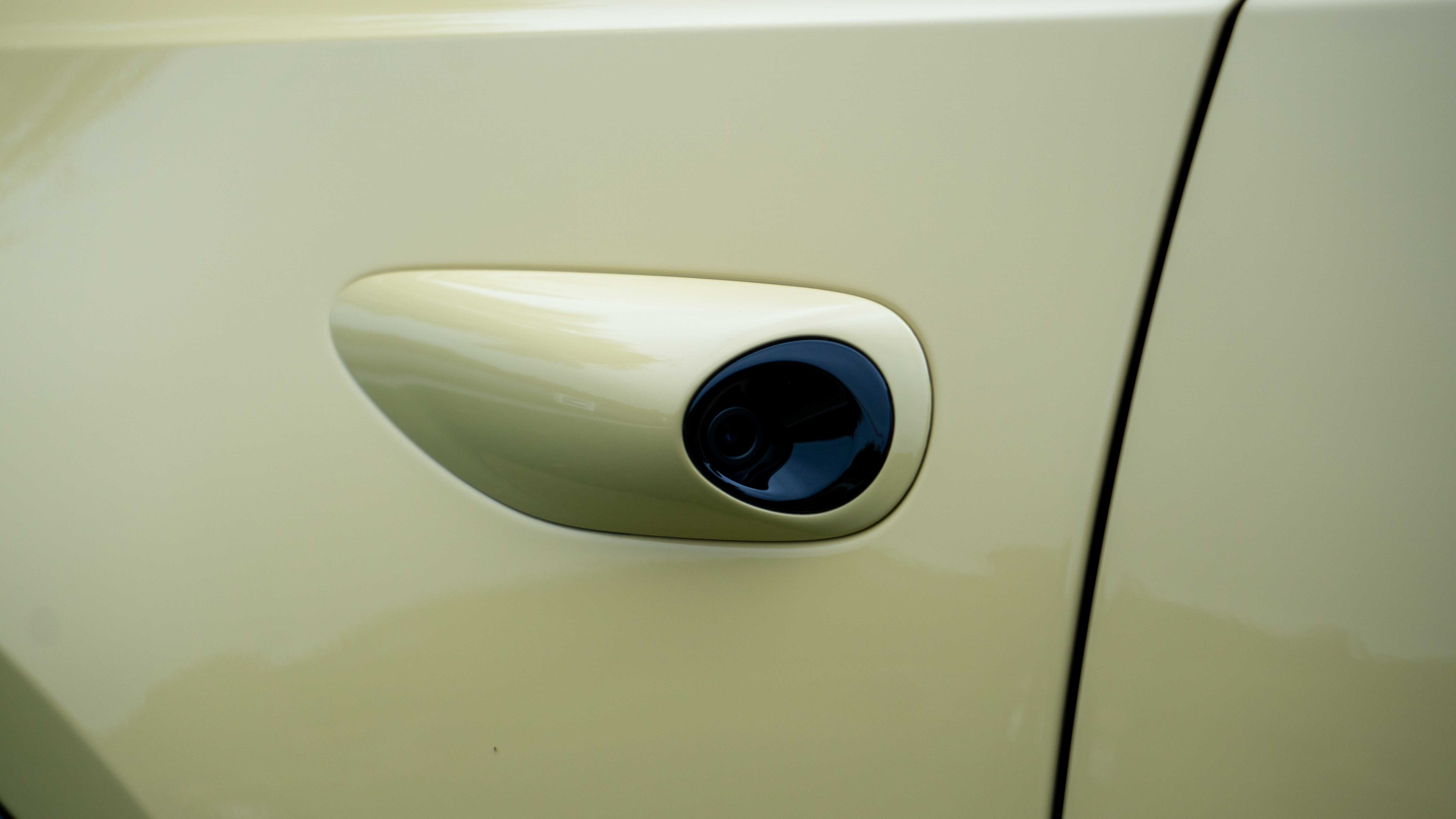
IM has also created a new interaction method for this screen, officially named “residual light interaction.” When the vehicle follows navigation and approaches a right turn, a blue light will appear at the top of the screen and move from left to right to prompt the driver to make the right turn, similar to Volkswagen’s ID. series IQ.Light.
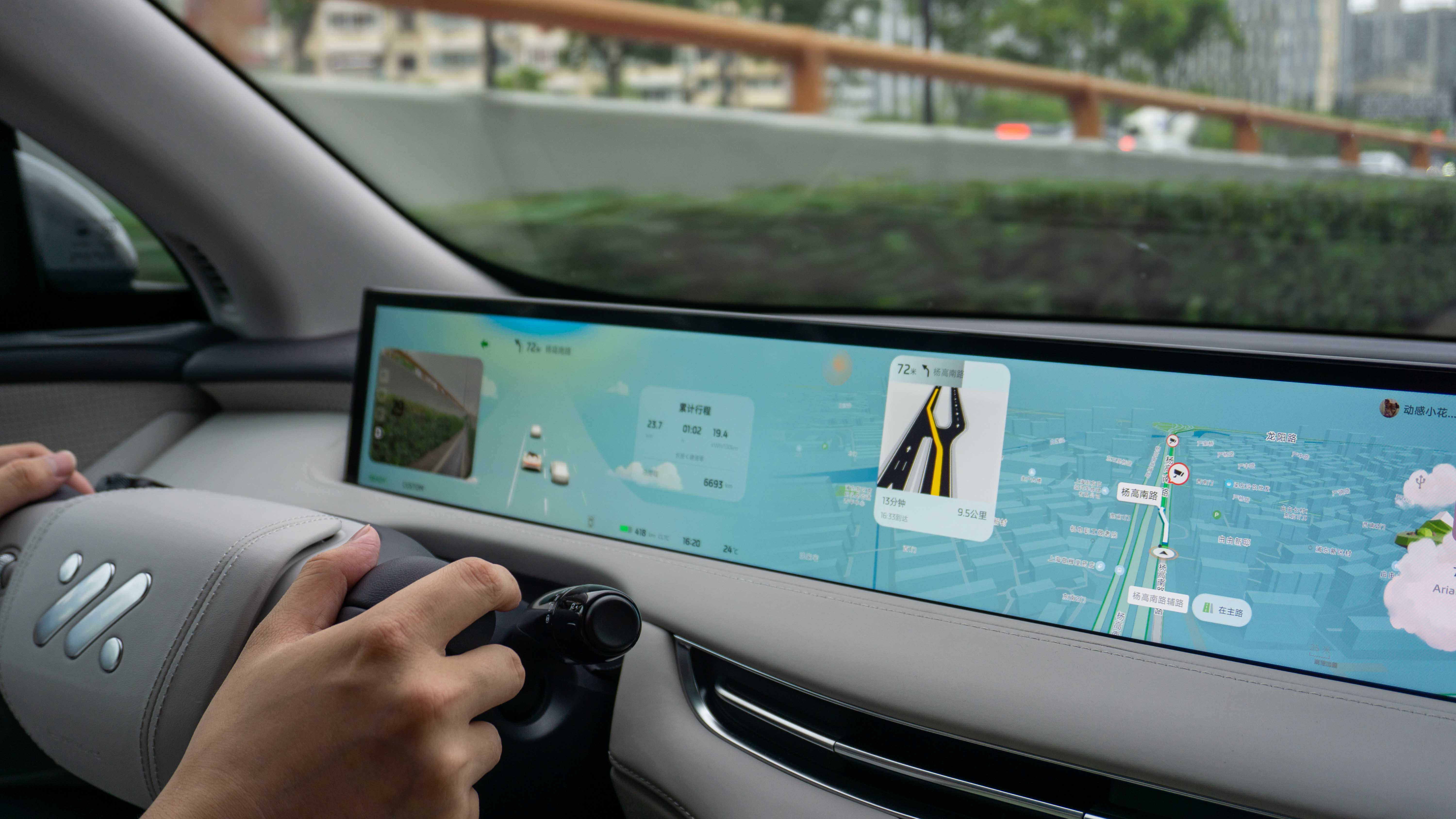
Additionally, when the turn signal is activated and the target lane has potentially dangerous vehicles, the residual light interaction will flash red on the corresponding side of the screen, effectively transferring the lane change assistant feature from the rearview mirror to the screen for dual alerts.
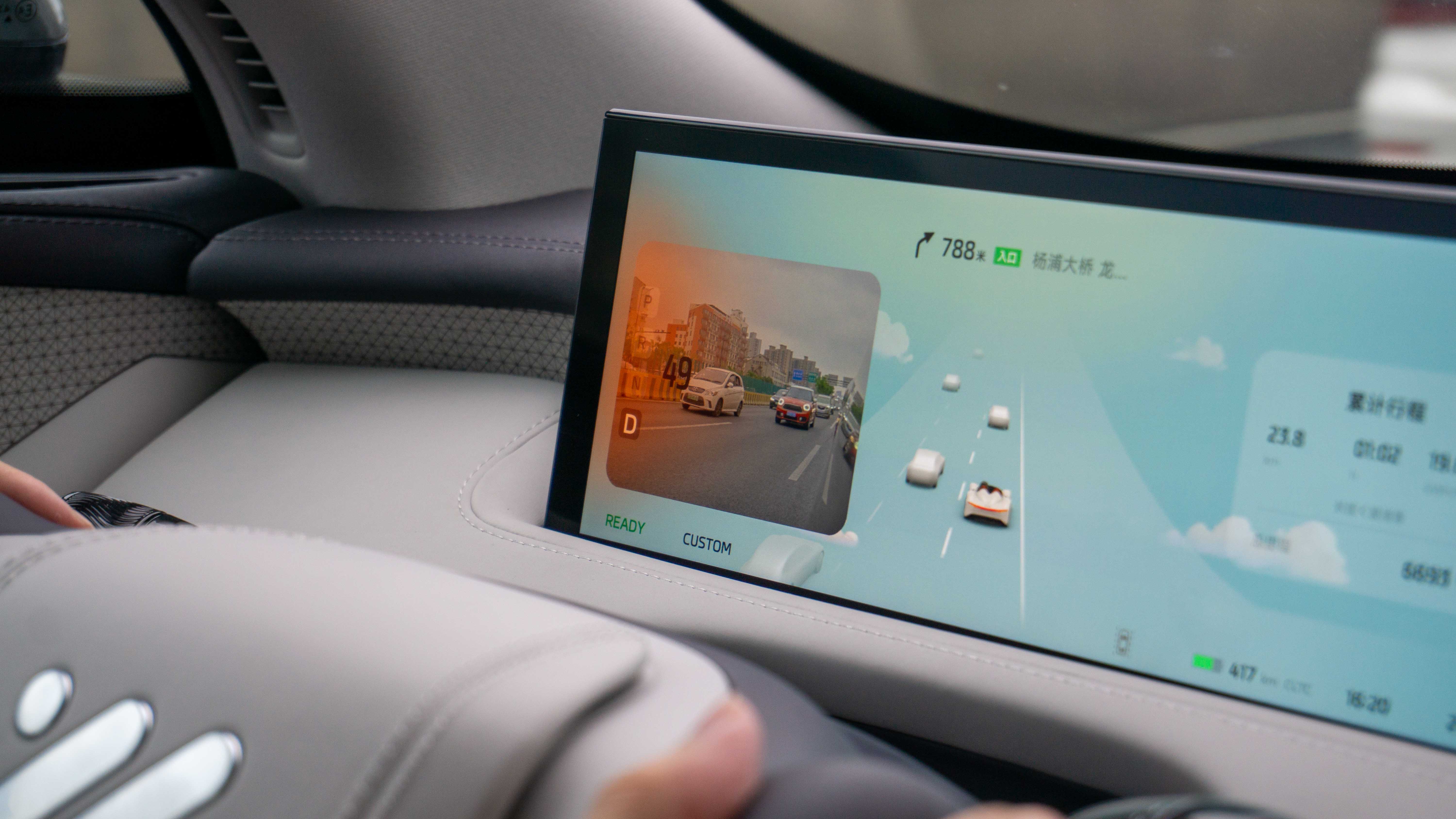
In this sense, IM LS7’s effort in cabin design is on the right track. With a semi-wrap steering wheel, a penetrative front screen, and an extensive front windshield, the already impressive visibility is further enhanced by incorporating more practical interaction methods, maximizing their current strengths.
Introducing Reclinable 5-Seater
The IM LS7 Urban Fit series also includes improvements to the rear seats.
Initially, IM LS7 was equipped with a zero-gravity space mode. To achieve ample zero-gravity space, the entire right side of the cabin’s interior was specially redesigned.
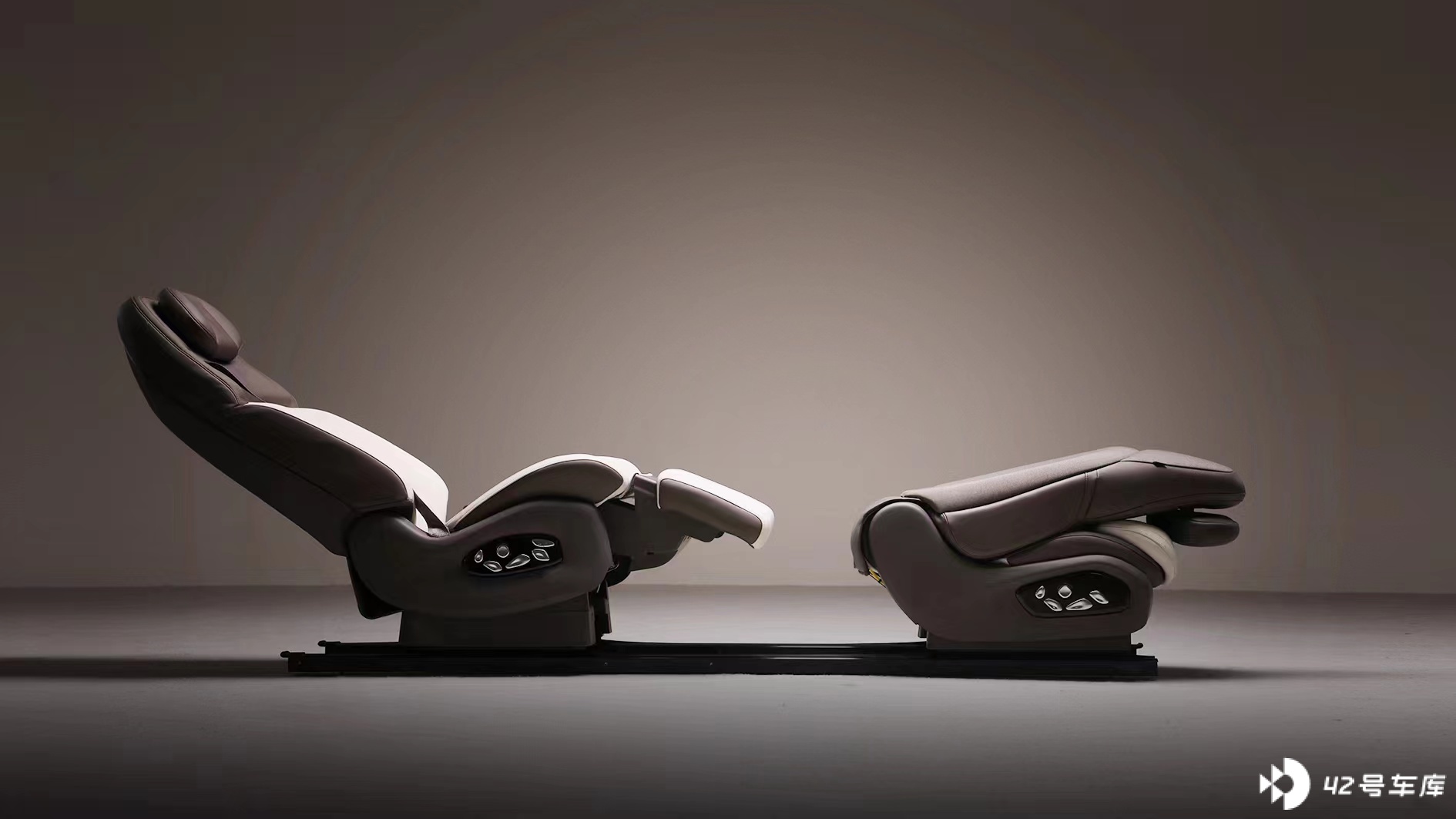 From the integrated electric slide rails in the front and rear, to the foldable front passenger seat that can be stowed under the dashboard, to the luxurious MPV-style independent second-row seats. Any of these points alone would be innovative for a luxury 5-seater car, and the LS7’s highly flexible space utilization is indeed a breakthrough in engineering innovation.
From the integrated electric slide rails in the front and rear, to the foldable front passenger seat that can be stowed under the dashboard, to the luxurious MPV-style independent second-row seats. Any of these points alone would be innovative for a luxury 5-seater car, and the LS7’s highly flexible space utilization is indeed a breakthrough in engineering innovation.

However, with the addition of zero-gravity seats, the expandability of the trunk is inevitably sacrificed, meaning that the trunk cannot be expanded by folding down the second-row seats.
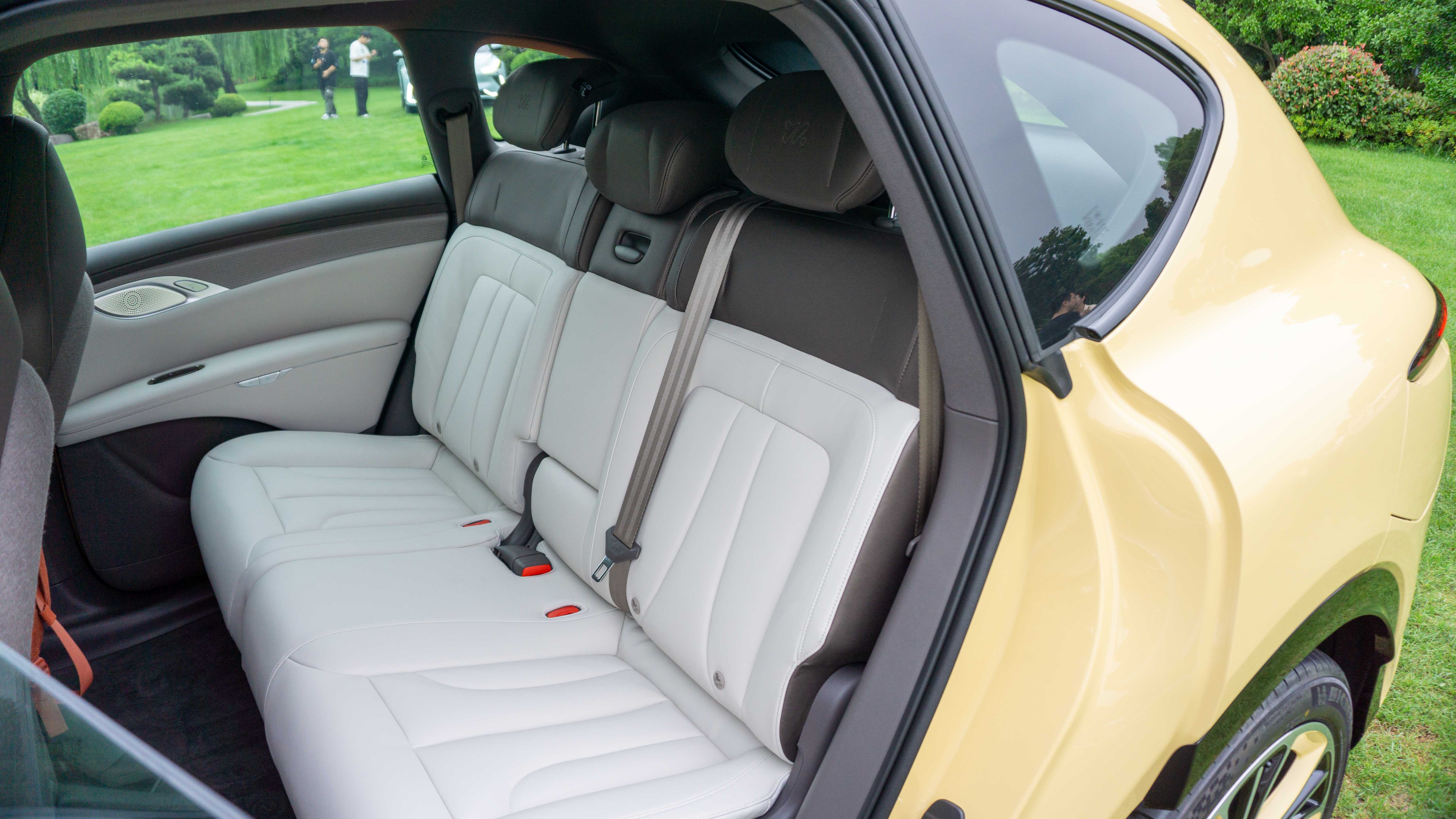

In the IM LS7 Urban Fit city series, the second row is transformed into a standard 3-seater layout. Surprisingly, the LS7’s rear seats support a 4/6 ratio of electric tilt up/down, which is very rare in comparable models.
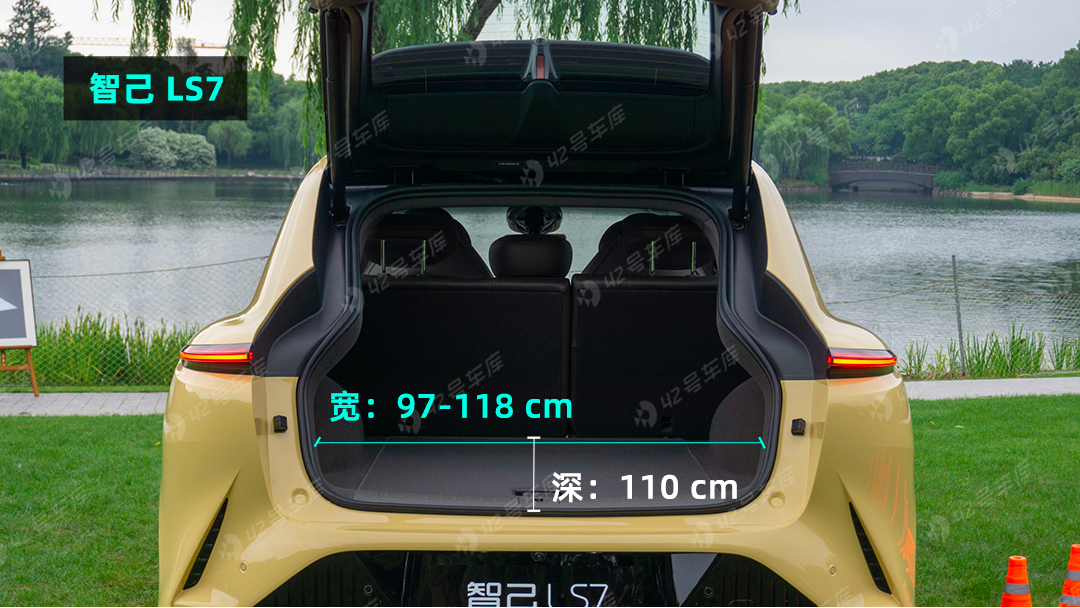
Currently, the LS7’s second-row lift can only be operated through buttons in the trunk and cannot be operated from inside the vehicle using buttons, voice commands, or the in-car system, which is a bit inconvenient. We promptly provided feedback to IM officials, hoping for improvements after the vehicle officially goes on sale.
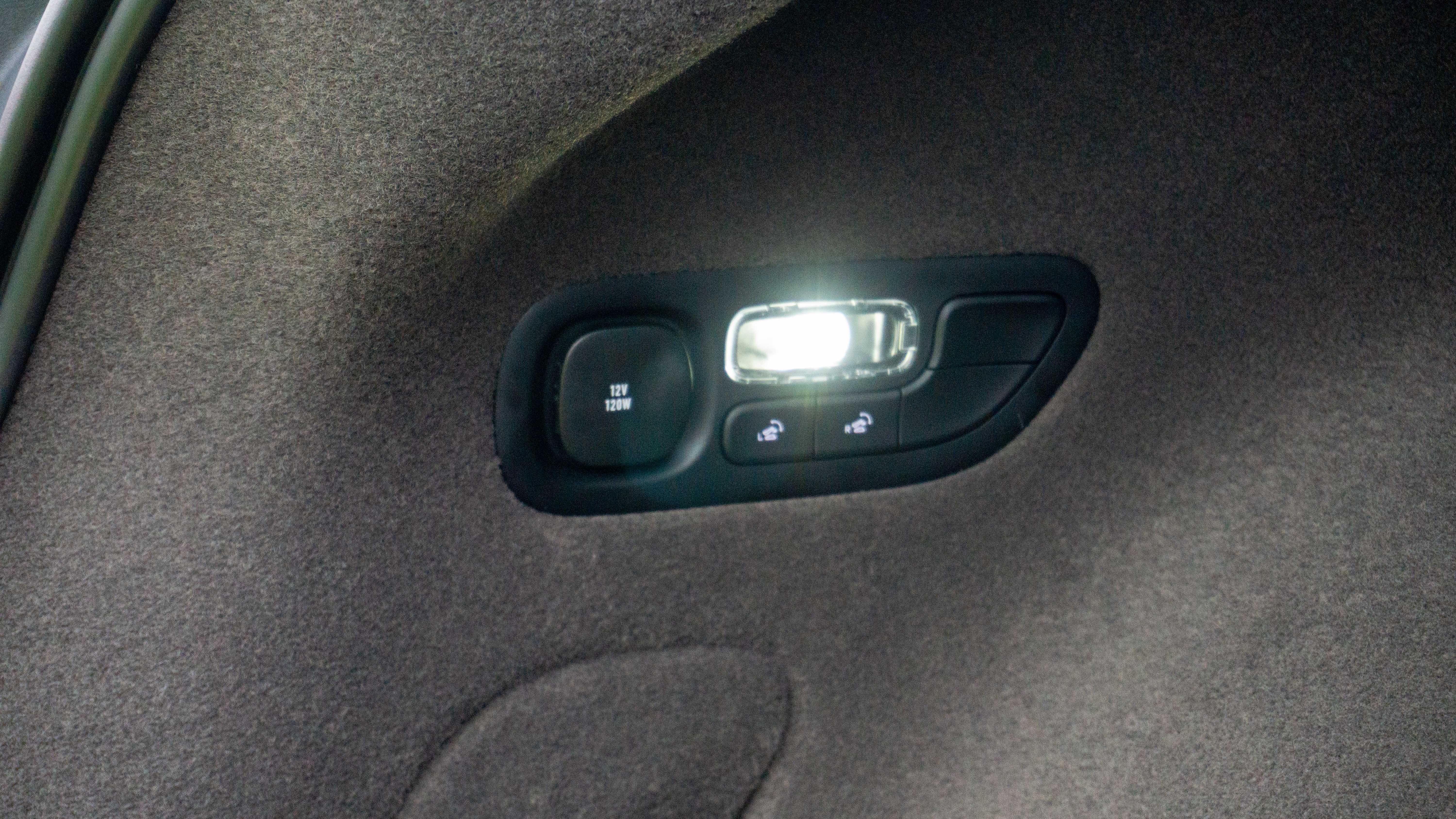
When the second-row seats are fully flattened, the trunk volume expands from 733 L to 1,731 L, and the depth of the trunk can be extended from 110 cm to 174.5 cm, with a width of 97-118 cm, comfortably accommodating two people lying down.

The IM LS7 Urban Fit city series also has minor adjustments in seat configuration. Firstly, the electric leg rests and headrests of the front passenger and driver seats have been removed. Thankfully, the seat design remains virtually unchanged, and even the large leg rest area is still present. According to our test, the front seat cushion length of the IM LS7 Urban Fit is 55 cm, making it an outstanding standout among its peers, with a height adjustment range of 35-39 cm.
The padding of this seat can be described as just right, with firmness where it needs to be and softness where it should be. In the middle of the seat, where it directly contacts passengers, a very thick, soft padding is used. Sitting on this seat, the fit with the human back is quite high.
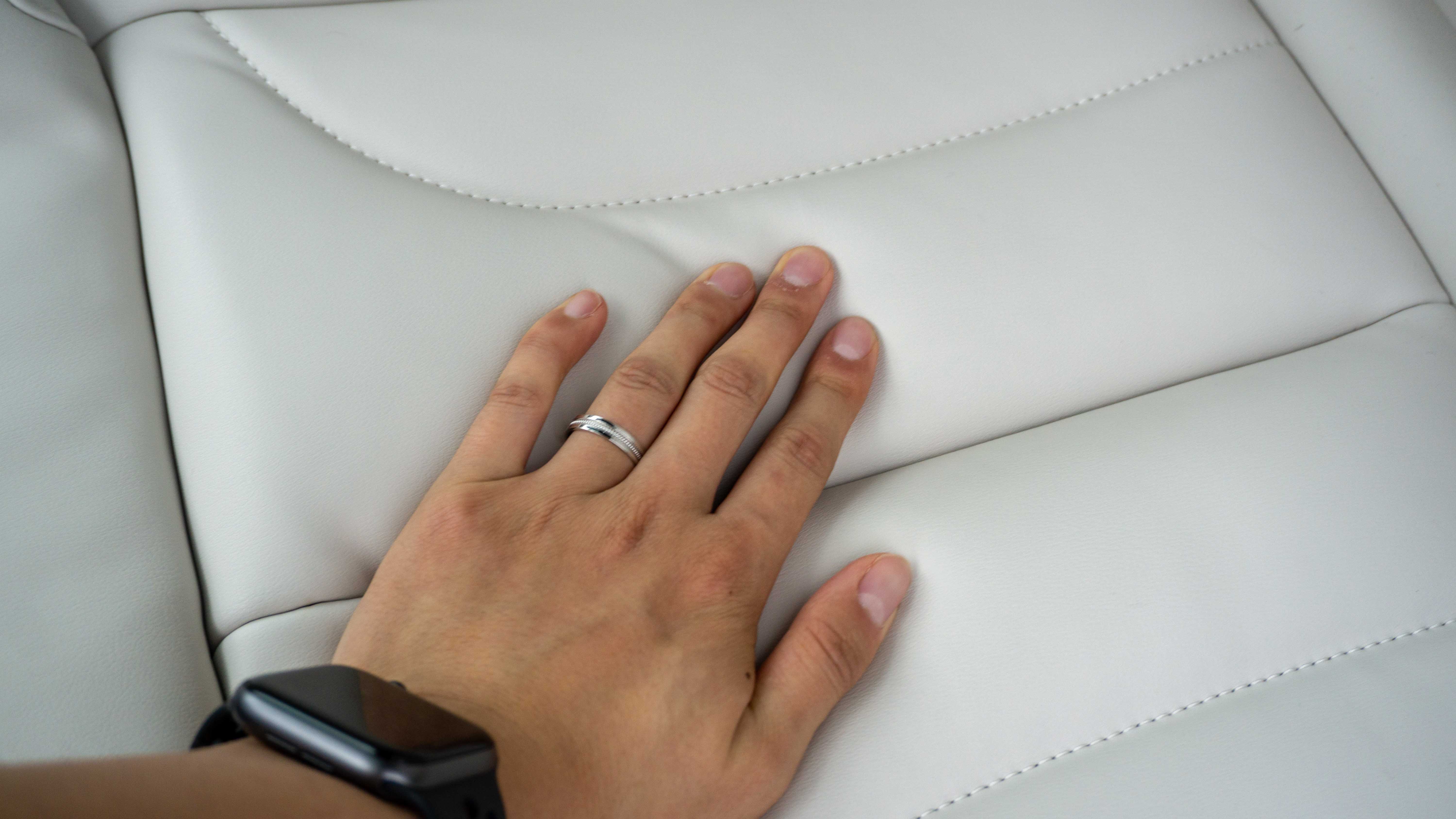
The side bolsters of the seat cushion and backrest are made of a harder material. If the vehicle experiences significant lateral tilt, the side bolsters can provide better containment for the occupants.
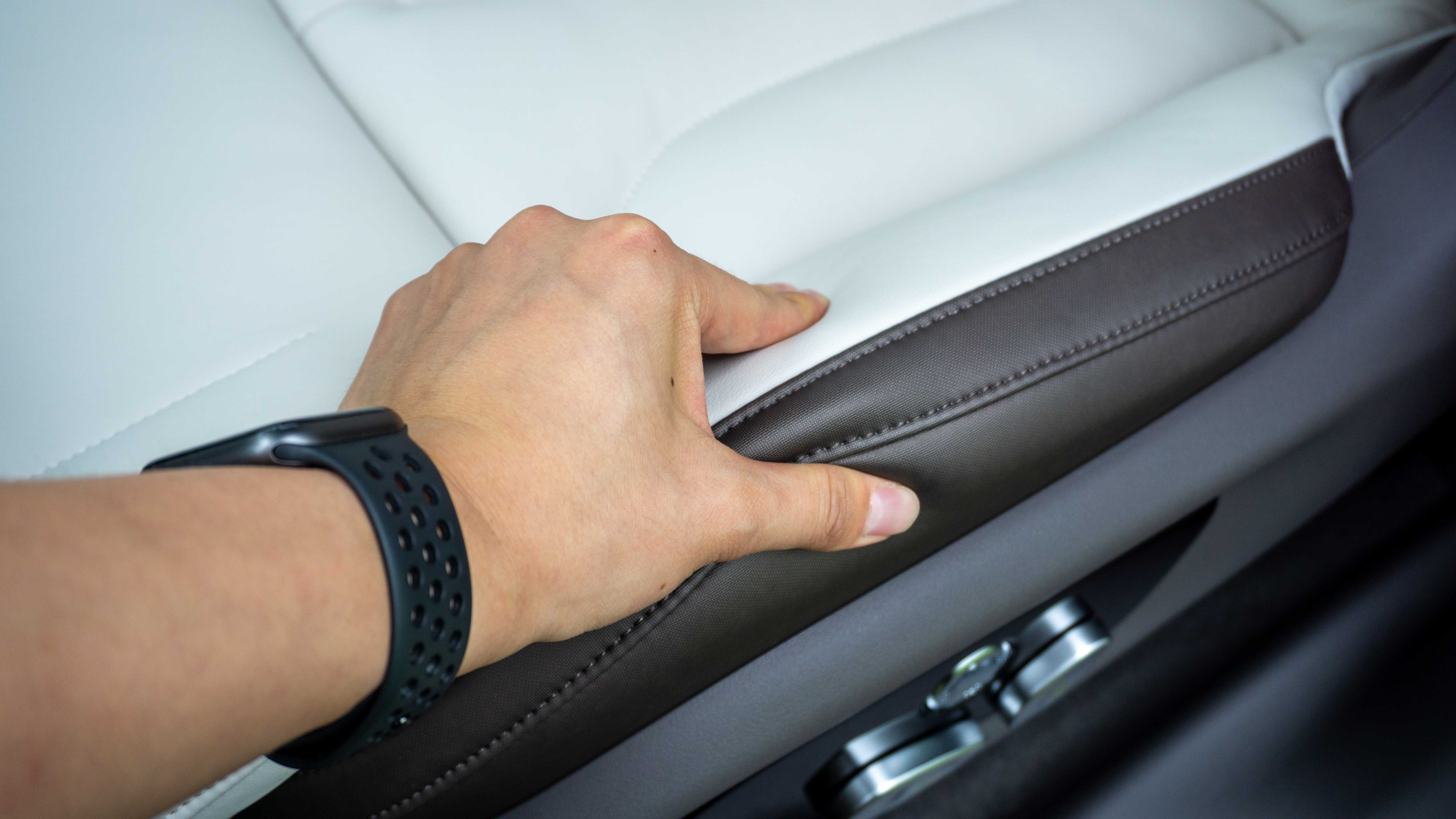
Moving to the rear seats, the IM Urban Fit city series and the optional zero-gravity rear seats offer similar comfort levels under normal riding experience. The rear seat cushion measures 53 cm in length, with a height of 38 cm, and the recline angle is just right, providing a good fit and support.
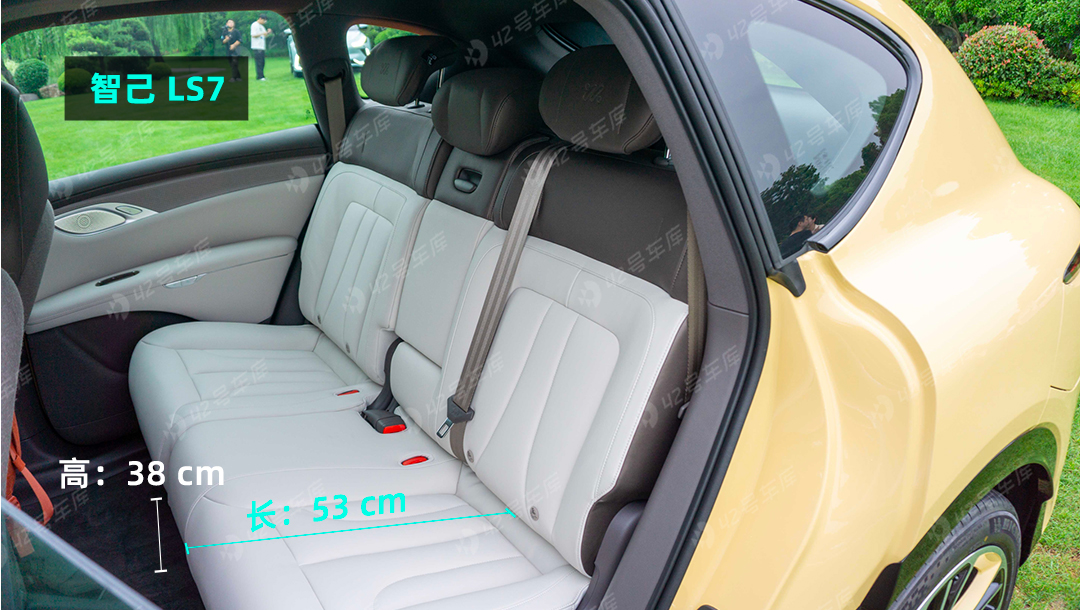
The rear seat base of the IM LS7 Urban Fit city series is different from other models. This car features a hollowed-out design, making the seat cushion seemingly floating above the floor. As a result, additional items such as parcels or shoes can be placed underneath, maximizing space utilization.
NOA brings surprises
During our test drive, we gave the IM LS7’s NOA system a try. This particular model is equipped with the basic configuration of 7 cameras, each with 5-million-pixel resolution, and 5 millimeter-wave radars. It does not have the optional two 126-line Robosense lidar units.

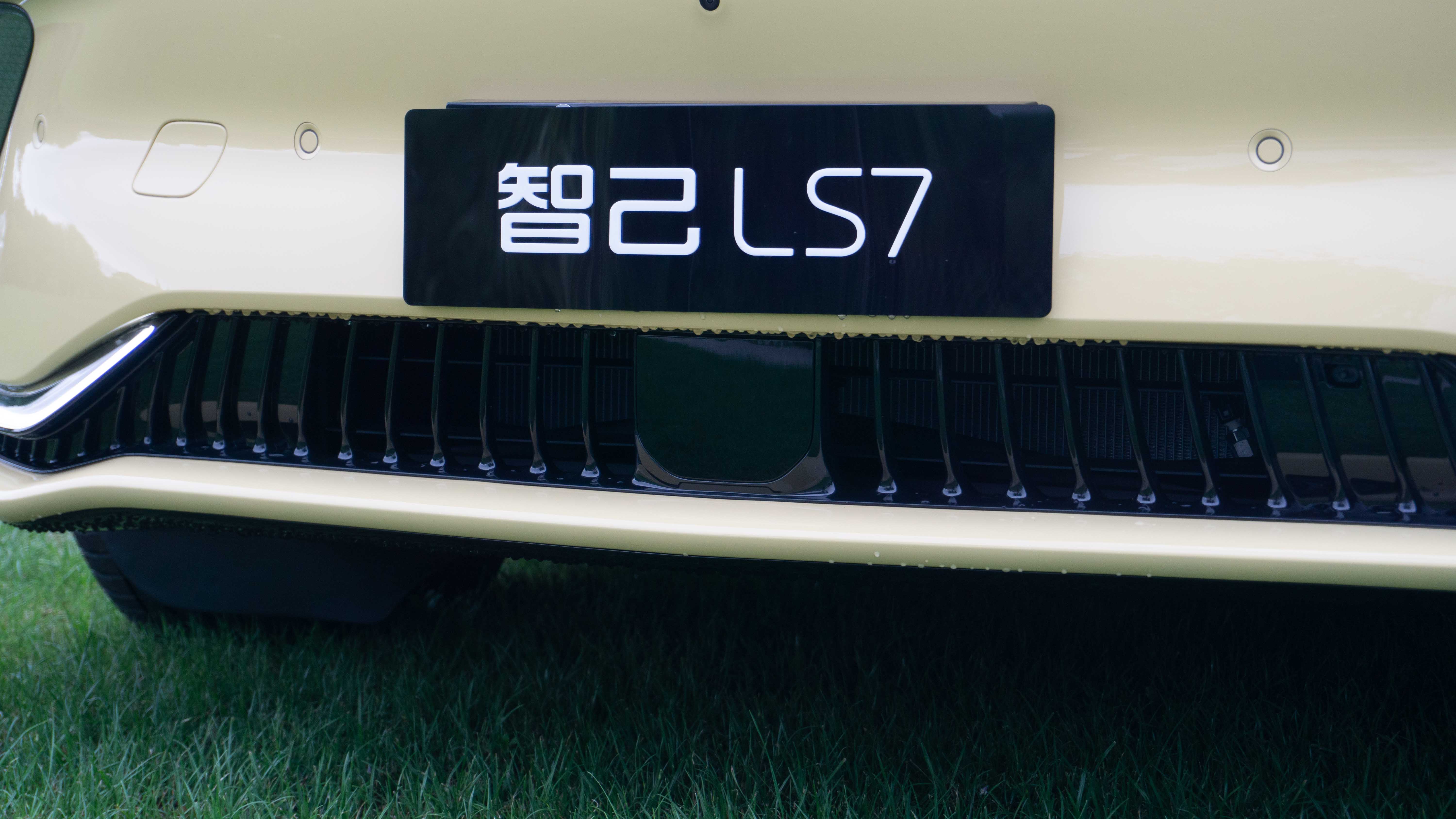
Upon entering the elevated highway with high-precision map data, flipping the switch downward activates the IM’s NOA system. During our drive on Shanghai’s stop-and-go Yan’an Elevated, the experience with the IM LS7’s NOA was quite impressive. The acceleration and deceleration while following vehicles were smooth, providing passengers with a high level of comfort.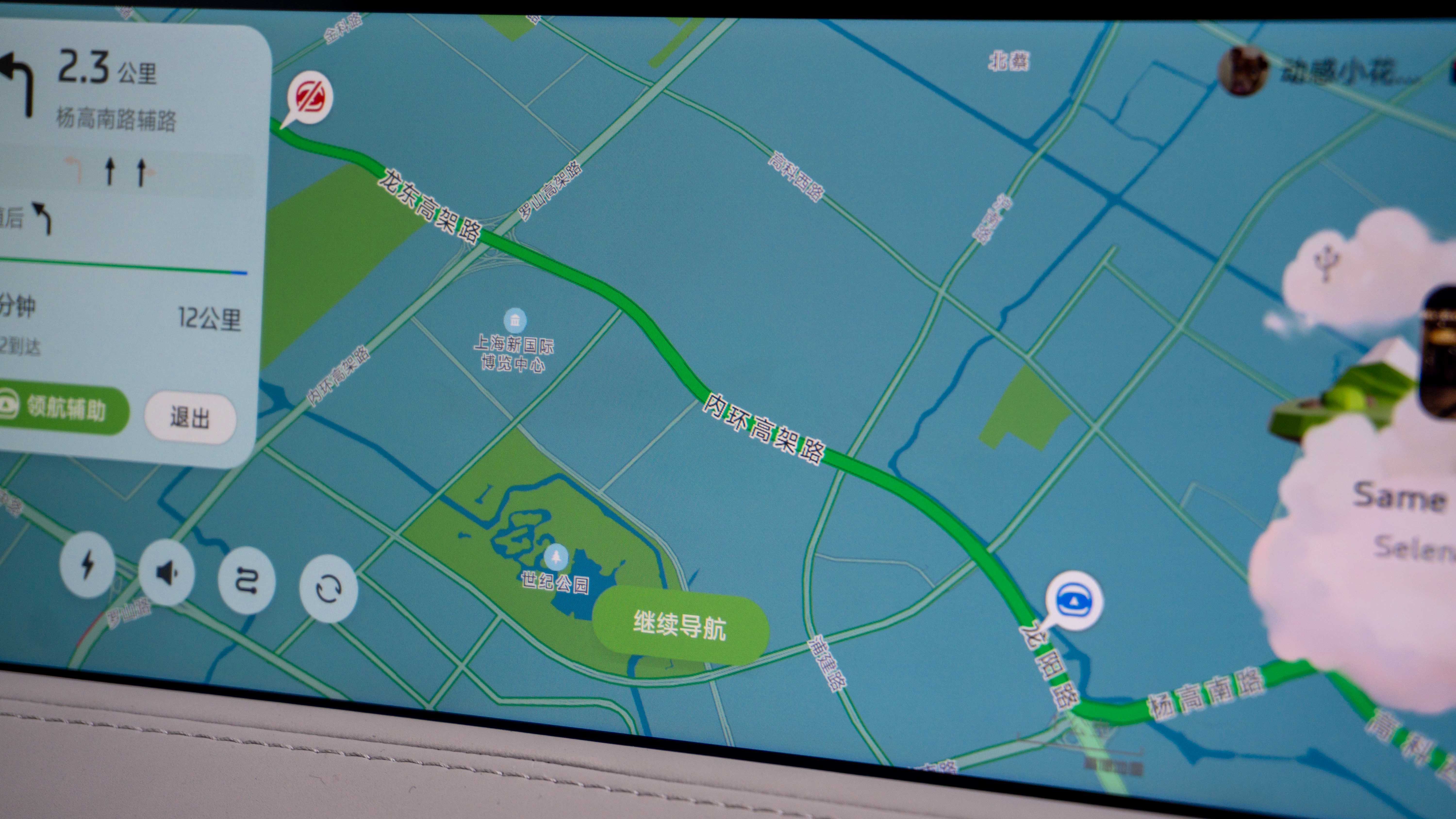
The NOA system’s performance on the exit ramp is quite impressive, initiating a lane change to the farthest right lane about 800 meters from the exit. At this time, there were vehicles traveling slowly both in front and behind in the farthest right lane. The LS7 first turned on the turn signal for a brief moment and made a slight move toward the lane, which seemed like an attempt to “squeeze” and create space for merging. This action almost made me take control of the vehicle.
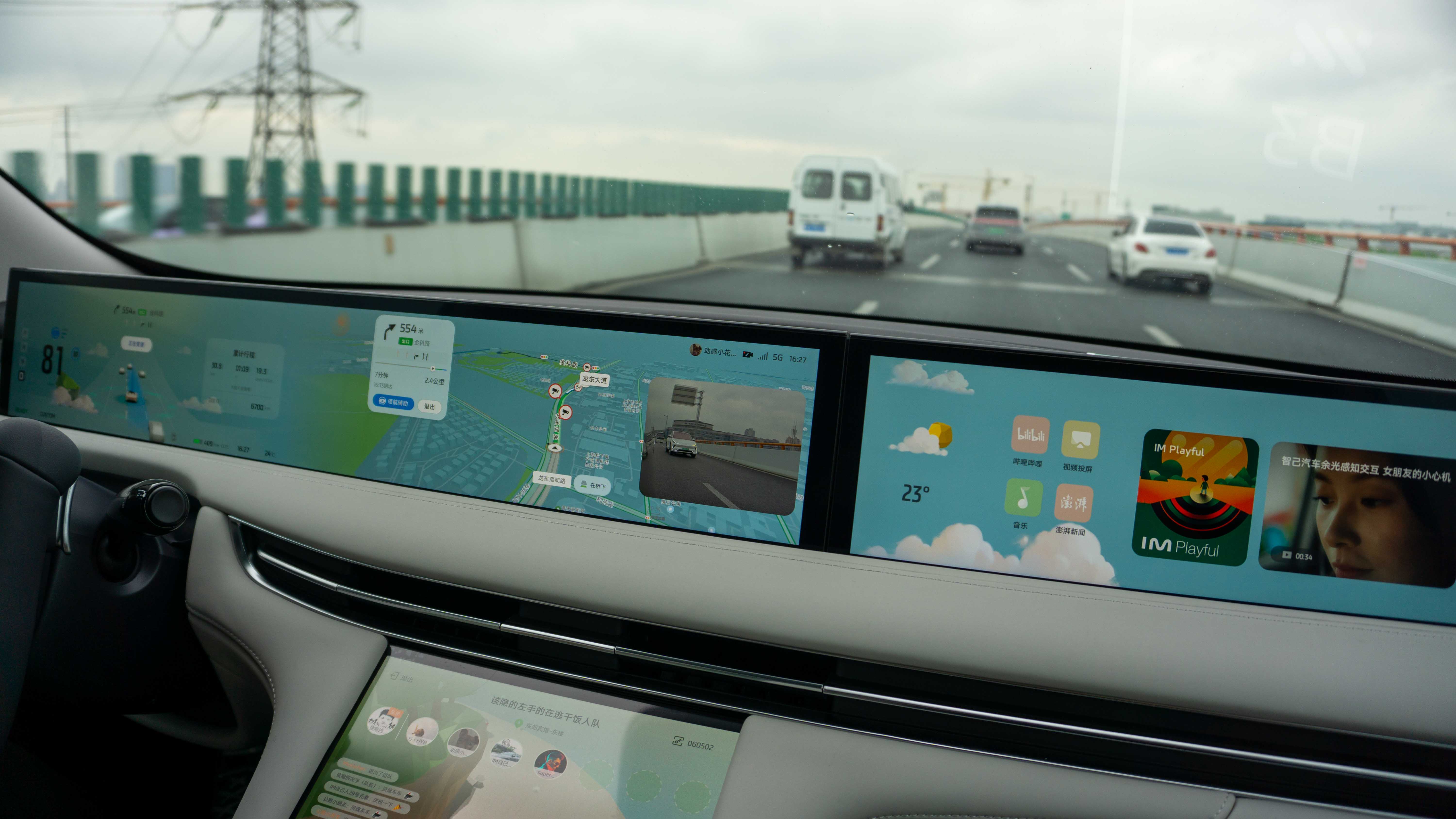
However, as I allowed the vehicle to create space, the traffic in the target lane slowed down as expected, allowing me to merge smoothly. Such an aggressive maneuver is quite rare. This IM AD system, built in collaboration with Momenta, has some commendable features in certain aspects of NOA performance.

But when the vehicle is not in NOA mode and encounters more congested traffic, the base PILOT function of the LS7 becomes weaker. Space between vehicles increases significantly, and it becomes easy for several cars to cut in front. Furthermore, in congested situations, it can be hard to judge the far lane lines, so the LS7 occasionally strays from its lane and then abruptly repositions itself after recognizing the lane lines once more. Therefore, I hope that the base PILOT capabilities of the LS7 can be further optimized and improved.
In conclusion
Returning to the price, is 289,800 yuan expensive?
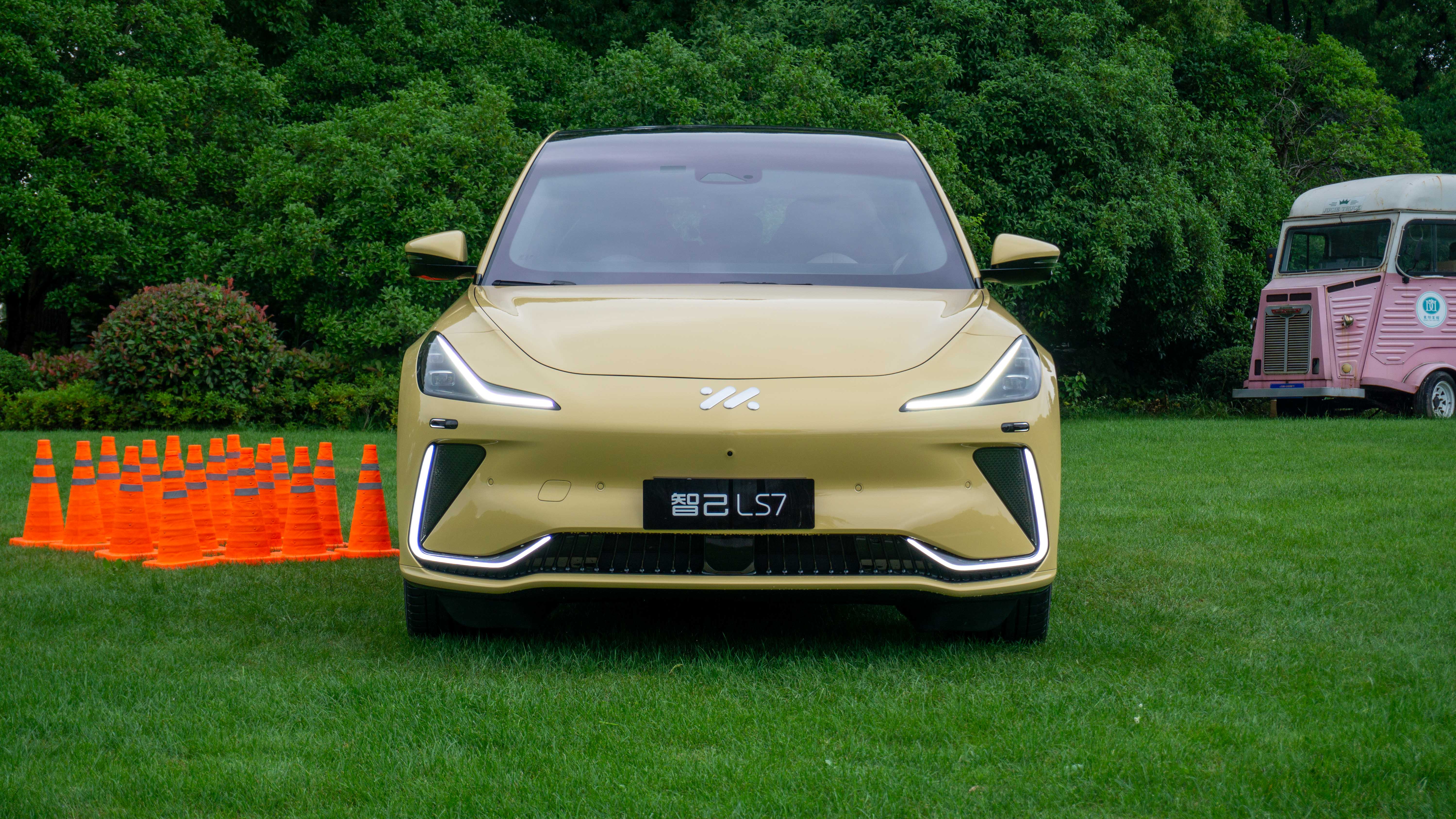
Yes, because in the Chinese automobile market, 300,000 yuan is a dividing line; luxury cars generally fall above this threshold. But when we look back at the LS7 Urban Fit, it is a medium-large pure electric SUV with brand appeal within the 300,000 yuan price range. The driving experience, design, and quality are exceptional, as are the higher-level configurations.
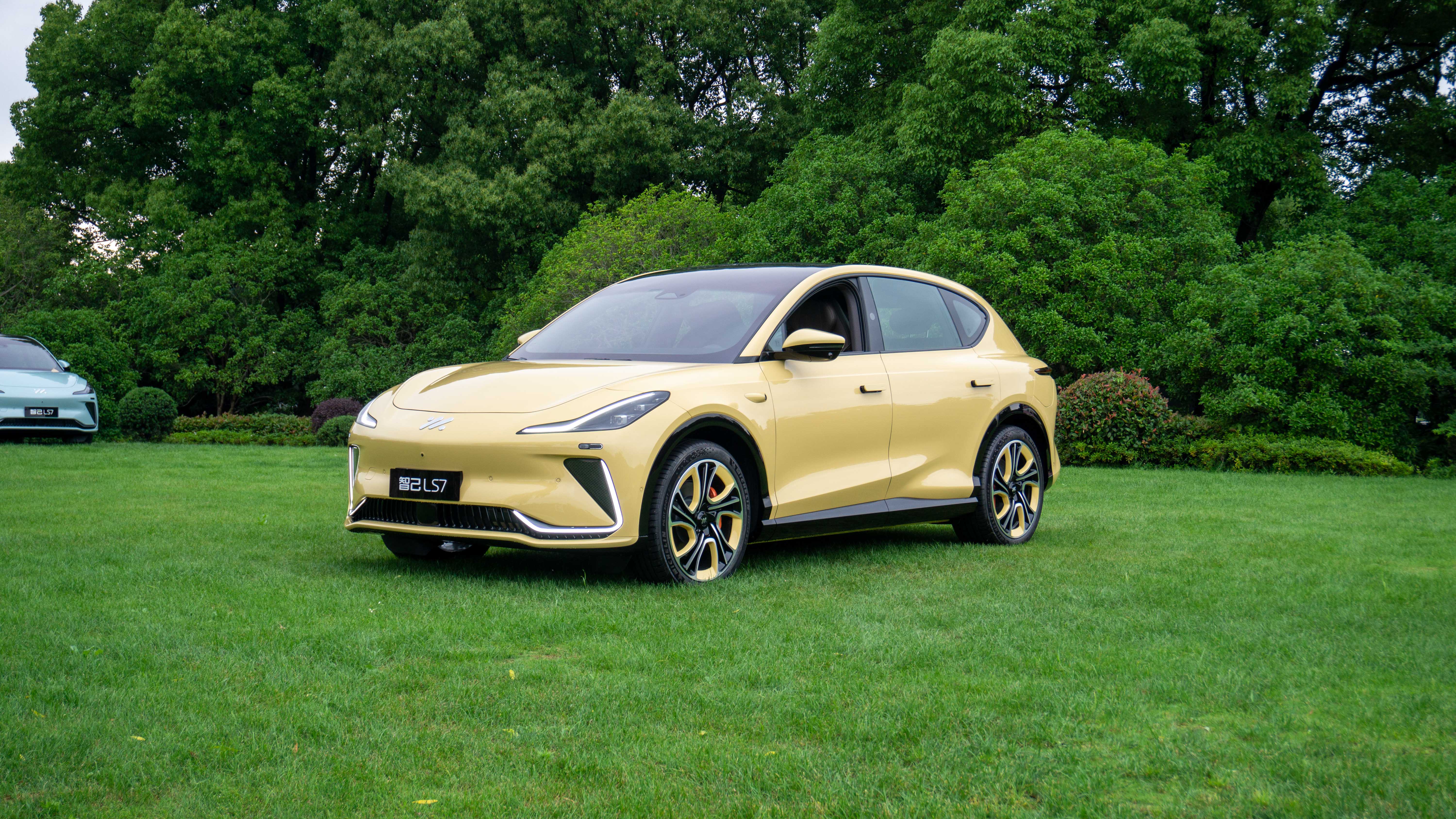
Tailored for urban use, the LS7 Urban Fit has made certain adjustments in terms of features and functionality, retaining its quality while lowering the price. As the Urban Fit series is introduced, the new version of OTA will be gradually pushed to the existing car owners, officially referred to as the “Full-View New Cockpit”, demonstrating IM’s thoughts on intelligence and cabin design.
This article is a translation by ChatGPT of a Chinese report from 42HOW. If you have any questions about it, please email bd@42how.com.
